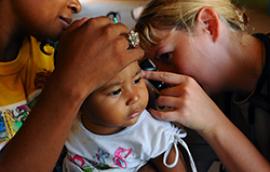U.S. Health System Transformation | Center for Health and Biosciences | Child Health Policy | Issue Brief
Tele-health in Schools: Increasing Access to Care in Urban Areas Tele-health in schools may be the answer to limited resources and a need to increase health care access for children.
Quianta Moore, Ashleigh Johnson June 4, 2015







